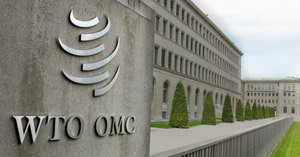U.S.-Taiwan Initiative on 21st Century Trade
- The U.S. and Taiwan announced formal negotiations on trade would begin in the early fall.
- While it won’t include tariff reductions, the negotiations underscore U.S. commitment to Taiwan at a time of heightened U.S.-China tensions. The Chinese government opposes any agreement that may imply recognition of Taiwanese sovereignty.
- It is unclear where the negotiations will ultimately land, but business should watch their progress closely to both monitor risk related to China’s response, as well as potential opportunities.
Issue
The U.S. and Taiwan commenced formal negotiations on the U.S.-Taiwan Initiative on 21st Century Trade on August 17. The initiative was first announced on June 1, 2022, under the auspices of the American Institute in Taiwan (AIT) and the Taipei Economic and Cultural Representative Office in the U.S. (TECRO).
Deepening bilateral trade relations with the United States has been a key priority of the Taiwanese government for decades, both to strengthen its strategic alliance with the United States and to lessen Taiwan’s economic dependence on China. Despite its strategic importance, little concrete progress on bilateral trade discussions has been made since the U.S. and Taiwan signed a Trade and Investment Framework Agreement in 1994, most recently due to Taiwan’s long-standing ban on U.S. imports of pork and beef which may contain ractopamine. This irritant was removed after Taiwan enacted measures easing restrictions on beef and pork imports in 2021.
What does it mean?
Commencement of negotiations is significant, even though the trade talks will not include discussions over tariff reductions. It helps alleviate the anxiety caused by the Biden Administration’s decision to exclude Taiwan from the recently announced Indo-Pacific Economic Framework for Prosperity (IPEF) by sending a strong signal of the United States’ continued economic and strategic commitment to Taiwan. In fact, the 11 areas agreed to as part of the negotiating mandate released by the two parties covers many of the same areas open for discussion under IPEF, including labor, climate, anti-corruption, standards setting, and digital trade. Notably, the mandate specifically includes discussion of ways to address distortive practices of state-owned enterprises and non-market policies and practices, two areas which are not part of IPEF and where there are significant policy differences between the United States and China.
The U.S. hopes the negotiations “will deepen our trade and investment relationship, advance mutual trade priorities based on shared values, and promote innovation and inclusive economic growth for our works and businesses.” Taiwan’s Office of Trade Negotiations said that it aimed to expand the Taiwanese economy by promoting trade of agricultural products and helping its small and medium sized enterprises expand to U.S. markets, as well as expanding investor confidence in Taiwan and attract international funding and technology. Taiwan’s top trade negotiator John Deng said he hoped the trade initiative could one day lead to a free trade agreement the island has long sought with the United States. Both sides pledged to pursue an “ambitious schedule for achieving high-standard commitments and meaningful outcomes” with the first round of negotiations expected to take place in early fall.
The Chinese Government said it opposes negotiations of any agreement that could imply Taiwanese sovereignty and urged the U.S. not to “send any wrong signal” and “miscalculate” on this.
Why does it matter?
The announcement has several implications beyond trade. First, it adds additional tensions to an already strained U.S.-China relationship. Second, it further solidifies geopolitical trends in both countries leaving even less political mobility for either side to be conciliatory or show weakness, especially with partisan control of the U.S. Congress on the line in the upcoming mid-term election cycle in the United States and President Xi’s bid for a third term at the 20th Congress of the Chinese Communist Party (CCP) later this year in China. Third, it provides additional geopolitical drama to an already complicated in-person meeting of the G-20 forum which will be held this November Indonesia. Indonesian President Joko Widodo said that President Xi would be attending the meetings, but the Chinese government has yet to confirm. And fourth, it could serve as a catalyst for the U.S. Congress to proceed with consideration of the Taiwan Policy Act of 2022 this fall, a bill that would overhaul U.S. policy towards Taiwan.
Where is it going?
In the near-term, business interested in the region should continue watching negotiations carefully, as they could lead to additional punitive countermeasures by China against the United States and/or Taiwan. Moreover, negotiations could spur additional bilateral engagement by other nations while adding a new element to an increasing network of economic initiatives with Taiwan, such as the recently announced U.S. proposal for a “Chips 4 Alliance” which could serve as a forum to coordinate manufacturing incentive programs and export controls among Japan, South Korea and Taiwan.
Over time, the agreement could eventually lead to increased export opportunities for U.S. businesses, especially in areas related to agriculture, digital trade, and services. In addition, there is long-standing bipartisan support in favor of increased trade relations with Taiwan, as demonstrated by a recent letter signed by forty-two Senators calling on the U.S. Trade Representative to prioritize negotiation of a Free Trade Agreement with Taiwan, opening the possibility that the U.S. Congress could undertake discussion of a trade bill authorizing tariff negotiations in the future. As noted by Speaker Pelosi upon her return from Asia, governments in the region are “urging [Congress] to do another trade bill.”



